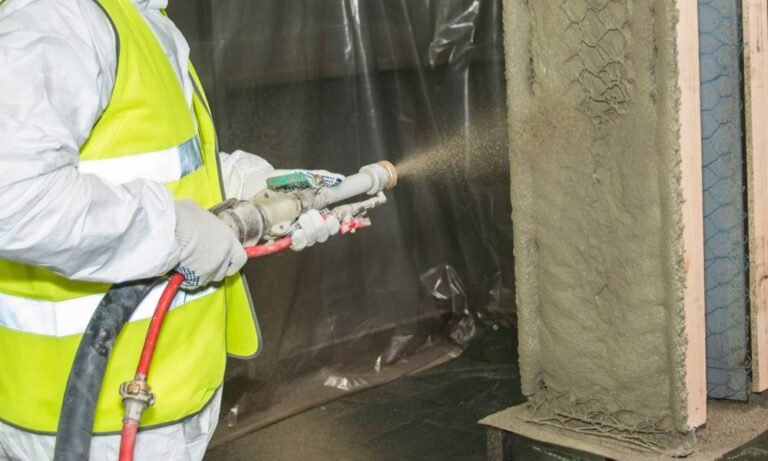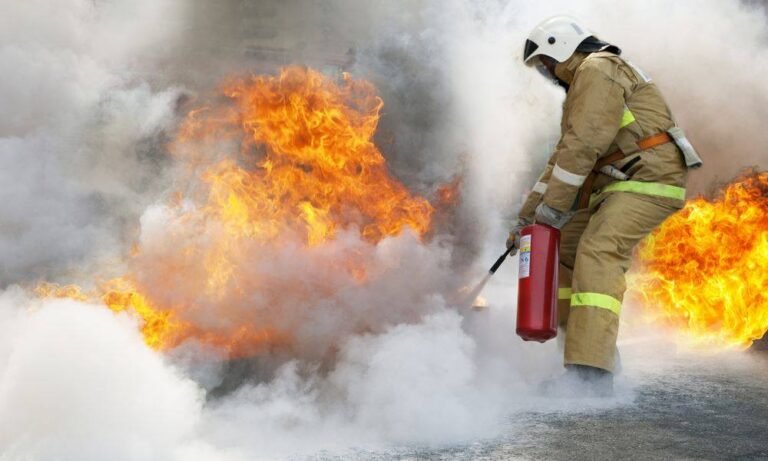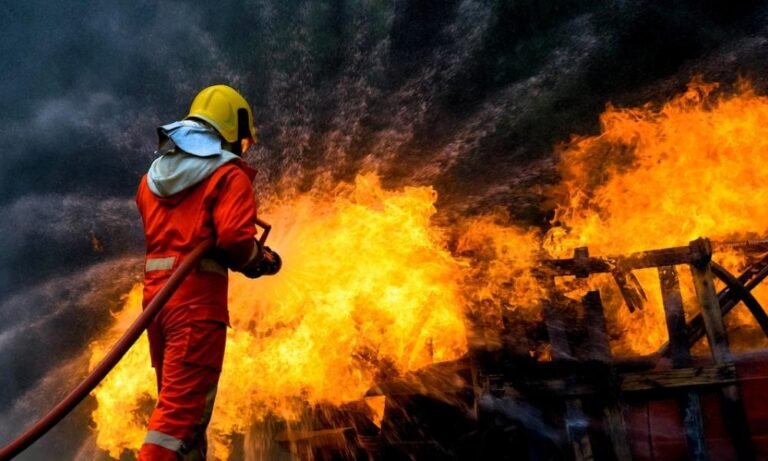Estimated reading time: 5 minutes
Fire safety is a priority for every homeowner, but what if I told you that many traditional protective materials come with an environmental cost? Some coatings and treatments contain harsh chemicals, while outdated suppression systems contribute to waste and pollution. Thankfully, sustainable alternatives are available that provide the same level of security without harming the planet.
Having worked in this field for years, I’ve seen how green fire protection methods can enhance home safety while reducing environmental impact. Let’s explore how you can protect your home without compromising sustainability.
What You’ll Learn Here
- The environmental impact of conventional fire prevention methods.
- The best eco-friendly materials and fire-resistant treatments.
- How sustainable solutions improve safety and indoor air quality.
- Practical ways to integrate environmentally responsible fire protection.
- Common myths about green fireproofing alternatives.

The Environmental Cost of Traditional Fire Protection
Most conventional fire-resistant treatments and suppression systems rely on chemicals that, while effective, come with serious drawbacks. Here’s why they’re problematic:
1. Chemical-Based Suppression Methods
Many extinguishers and flame retardants contain halons and fluorinated gases, which are known to damage the ozone layer and contribute to climate change. Once deployed, they often leave behind toxic residues that require specialized cleanup.
2. Non-Biodegradable Waste
Certain insulation materials, treated wood, and synthetic coatings aren’t designed for recycling. When they wear out, they end up in landfills, where they take decades to decompose.
3. High Energy Consumption
Some fire suppression systems require continuous monitoring and high energy input, increasing carbon emissions over time.
So, what’s the alternative? Let’s explore the best sustainable fire protection materials that can keep your home safe while being kinder to the environment.
Eco-Friendly Materials and Methods for Fire Prevention
1. Natural Fire-Resistant Insulation
Most people don’t think about insulation when considering home safety, but the right materials can provide protection and sustainability. Here are some great options:
- Wool Insulation – Naturally flame-resistant, biodegradable, and renewable.
- Cellulose Insulation – Made from recycled paper and treated with non-toxic retardants.
- Recycled Denim Insulation – A safer alternative that helps slow fire spread without synthetic additives.
2. Non-Toxic Coatings for Added Resistance
Certain intumescent paints expand when exposed to heat, forming a protective barrier without emitting toxic fumes. These coatings can be applied to:
- Wooden beams to prevent charring.
- Structural steel to maintain integrity during extreme heat.
- Drywall and ceilings for enhanced fire resistance.
3. Clay and Lime-Based Plasters
Plaster isn’t just for aesthetics—it’s also a fire-resistant shield. Clay and lime-based finishes create a natural barrier against flames without relying on synthetic components.
4. Plant-Based Fire Retardants
Instead of chemical sprays, bio-based flame retardants use plant extracts to treat wood, furniture, and fabrics. These natural alternatives are gaining popularity for eco-conscious homeowners.

5. Sustainable Fireproofing for Wood and Textiles
- Boron-based treatments – A natural method for increasing wood’s fire resistance.
- Hemp and wool fabrics – Naturally flame-resistant upholstery options that eliminate the need for chemical coatings.
How to Integrate Green Fire Safety Measures at Home
1. Assess Your Current Safety Setup
Before making changes, evaluate your home’s existing protective features. If your insulation, coatings, or extinguishers contain harsh chemicals, consider making upgrades.
2. Choose Sustainable Materials for Renovations
Whether you’re building or updating a space, opt for materials that provide both fire resistance and environmental benefits:
- Recycled insulation instead of fiberglass.
- Low-VOC, intumescent coatings instead of synthetic sealants.
- Wood treated with natural solutions rather than chemical-based sprays.
3. Opt for Low-Energy Fire Prevention Systems
Look for low-energy fire alarm systems and passive protection methods, such as water mist systems or automatic fireballs, which function without electricity.
Want to learn how fire prevention measures can also add value to your home? Check this out.
Debunking Common Myths About Eco-Friendly Fire Protection
“It’s Less Effective Than Traditional Methods”
Not true. Many natural fire-resistant materials, such as clay, lime, and wool insulation, offer strong protection while eliminating harmful chemicals.
“It’s Too Expensive”
While some sustainable materials may have a higher upfront cost, they last longer and require less maintenance, making them a cost-effective choice over time.
“There Aren’t Many Options Available”
The demand for green fireproofing has increased significantly, with more builders and manufacturers offering certified sustainable materials.
For a broader look at fire prevention, check out this guide on the difference between active and passive fire protection.
Looking Ahead: The Future of Sustainable Fireproofing
The industry is evolving, and environmentally friendly fire protection is gaining traction. Innovations in bio-based materials, non-toxic suppression methods, and energy-efficient safety systems are shaping the future.
Forward-thinking homeowners should explore:
- New fire-resistant insulation technologies.
- Fire prevention methods that use renewable energy sources.
- Smart home safety systems that minimize environmental impact.
For more on modern advancements in fire prevention, check out this resource.
Final Thoughts: Fire Protection Can Be Green and Effective
Fire safety shouldn’t come at the expense of the environment. By choosing sustainable materials and energy-efficient solutions, you can protect your home without contributing to pollution.If you’re serious about making responsible choices, start with small upgrades, such as switching to non-toxic coatings and fire-resistant natural insulation. Every step toward sustainable home safety helps create a safer, healthier world.



